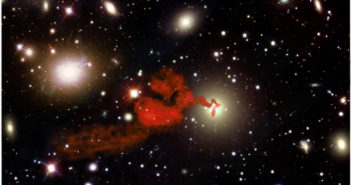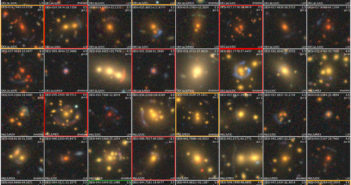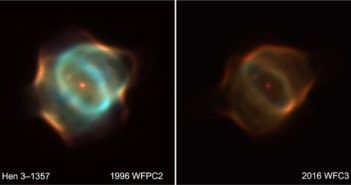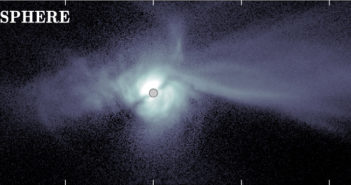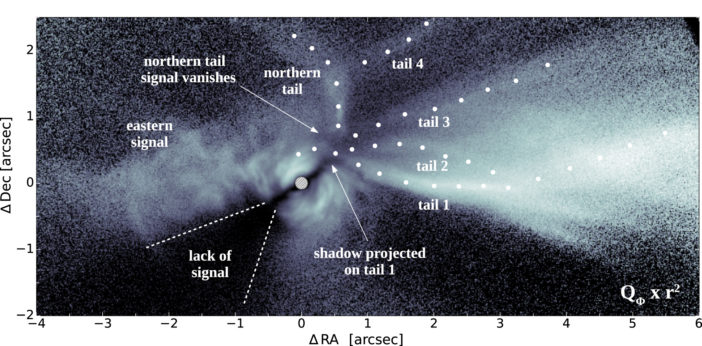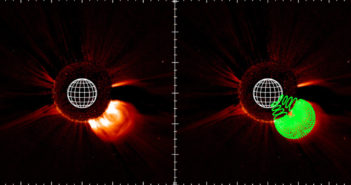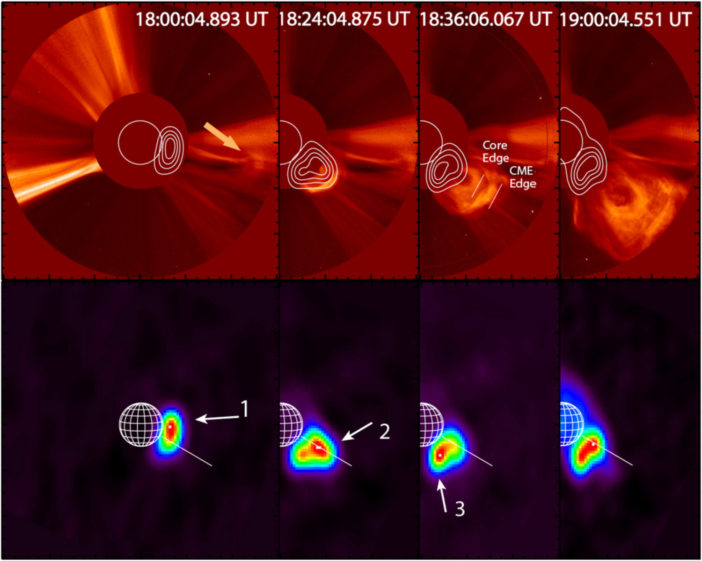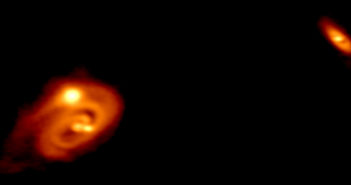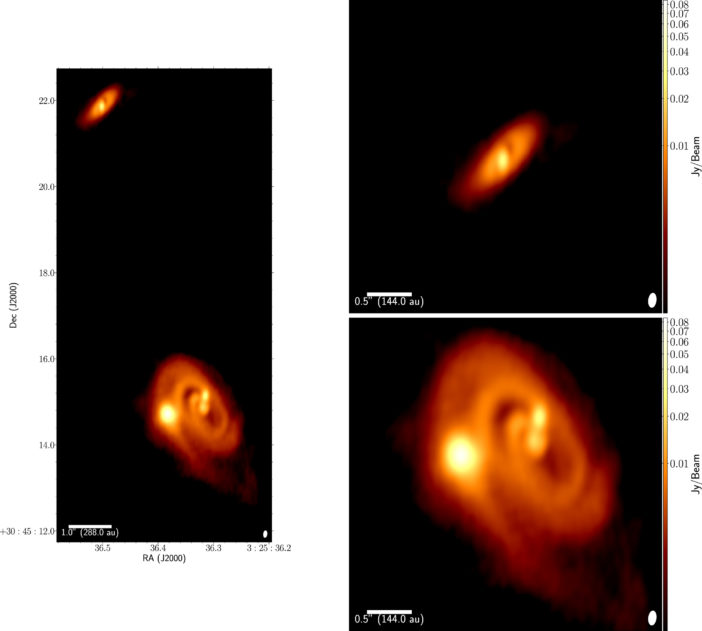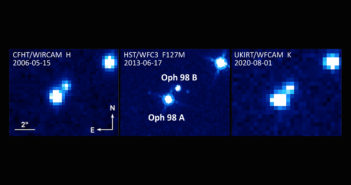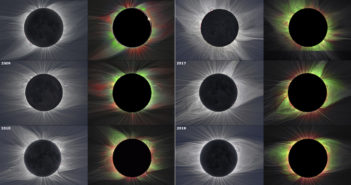
Featured Image: Eclipses Reveal Sources of Solar Wind
The figure above (click for the full view) contains 6 pairs of images of the Sun captured during different total solar eclipses between 2008 and 2020. During an eclipse, the Moon blocks the bright light of the solar disk and reveals the complex structure of the Sun’s corona. Each beautifully detailed pair of images above shows a white-light picture (left), and an overlay of white light with Fe XI 789.2 nm (red) and Fe XIV 530.3 nm (green) emission (right). A team of scientists led by Shadia Habbal (Institute for Astronomy, University of Hawaii) has used these images and complementary in situ observations from NASA’s Advanced Composition Explorer — a spacecraft that measures the properties of solar wind particles — to explore the source regions of different solar wind streams. By studying where solar wind streams arise, the authors are able to better understand the physical processes that shape these flows of energetic particles from our host star. To learn more about their work (and to see more spectacular images!), check out the article below.
Citation
“Identifying the Coronal Source Regions of Solar Wind Streams from Total Solar Eclipse Observations and in situ Measurements Extending over a Solar Cycle,” Shadia R. Habbal et al 2021 ApJL 911 L4. doi:10.3847/2041-8213/abe775
